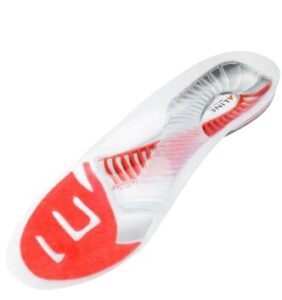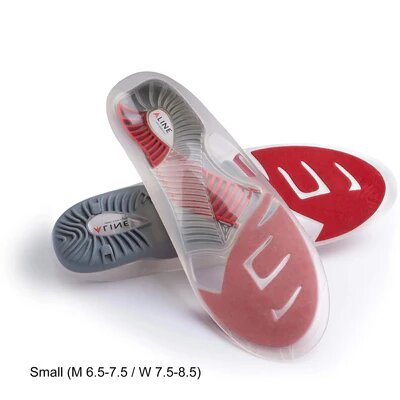Introduction
Finding the perfect dress shoe that offers both elegance and support is a common challenge for women dealing with women’s plantar fasciitis dress shoes. Women need shoes that alleviate heel pain without compromising style. Thankfully, a variety of dress shoe options now cater to both style and comfort. This article explores the best options for dress shoes for women with plantar fasciitis, providing insights on materials, design, brands, and fit to help you find your ideal pair.

What is Plantar Fasciitis and How Does It Affect Footwear Choices?
Women’s plantar fasciitis dress shoes is a painful condition caused by inflammation of the plantar fascia, a ligament that runs along the bottom of the foot. People with plantar fasciitis often experience intense heel pain, particularly when walking or standing for long periods. This pain affects footwear choices, as certain features—like proper arch support, cushioning, and stability—become essential to alleviate discomfort. Finding dress shoes with these features is crucial for preventing flare-ups and promoting comfort throughout the day.
Key Features to Look for in Dress Shoes for Plantar Fasciitis
Choosing dress shoes for women’s plantar fasciitis dress shoes goes beyond looks. Key features include excellent arch support, cushioned insoles, a slight heel, and a stable outsole. These elements ensure the foot is supported, relieving pressure from the heel and arch. Shoes with ample cushioning distribute impact more evenly, reducing strain on the plantar fascia. Stability features, such as a wide heel base and firm soles, add balance, making the shoes more comfortable for prolonged wear.
How Arch Support Relieves Plantar Fasciitis Pain
One of the most important factors in selecting shoes for women’s plantar fasciitis dress shoes is arch support. Without it, the plantar fascia experiences more strain, leading to pain and inflammation. Good arch support aligns the foot properly, reducing the stress on the fascia and allowing for a more natural foot position. This alignment eases tension and helps manage plantar fasciitis symptoms, making arch support a vital feature in any dress shoe choice.
Cushioning Materials that Add Comfort to Dress Shoes
Dress shoes for women’s plantar fasciitis dress shoes often feature high-quality cushioning materials like memory foam, gel, or EVA foam. These materials provide a soft yet supportive base for the foot, absorbing shock and reducing the impact on sensitive areas. Memory foam conforms to the shape of the foot, offering personalized comfort, while gel layers add extra support for the heel. EVA foam is lightweight and flexible, giving a bounce-back effect that enhances comfort throughout the day.
Why Heel Height Matters in Plantar Fasciitis Shoes
While high heels are typically not recommended for women’s plantar fasciitis dress shoes, a small heel lift can actually benefit individuals with this condition. Shoes with a slight heel of around 1 to 2 inches help distribute weight more evenly across the foot, reducing pressure on the heel. This slight elevation also prevents overstretching of the plantar fascia. Look for shoes with a moderate heel that still provide the support needed for all-day wear.
The Role of Outsoles in Supporting Foot Health
Outsoles play a crucial role in comfort, stability, and support. Shoes with firm, non-slip outsoles provide a solid foundation that stabilizes the foot, preventing unnecessary movement that could aggravate plantar fasciitis. Durable rubber or thermoplastic outsoles are excellent choices as they offer traction, stability, and a supportive structure. These outsoles ensure that each step feels steady, reducing the risk of painful twists or strains.
Breathable Dress Shoes for All-Day Comfort
For all-day wear, breathability is essential. Dress shoes made from materials like leather, mesh, or other breathable fabrics allow air to circulate, reducing moisture buildup and keeping feet cool. This is especially important for those with women’s plantar fasciitis dress shoes, as hot, swollen feet can worsen discomfort. Breathable shoes prevent excessive sweating, which helps to maintain a comfortable and fresh feeling throughout the day.
Top Recommended Brands for Plantar Fasciitis Dress Shoes
Several brands specialize in creating supportive and stylish shoes for plantar fasciitis. Brands like Vionic, Clarks, and Orthofeet are known for their emphasis on comfort without sacrificing style. Vionic integrates podiatrist-designed arch support, while Clarks offers shoes with ample cushioning and durable construction. Orthofeet shoes are often customizable with removable insoles, allowing wearers to achieve the perfect level of support.
Stylish Dress Shoe Options for Work and Social Events
For work or social gatherings, finding stylish yet supportive shoes can feel limiting. However, modern designs have brought forward options that blend style with plantar fasciitis-friendly features. Loafers, ballet flats with arch support, low-heeled pumps, and oxfords are ideal choices. These shoes offer a sleek look appropriate for formal settings while still providing the necessary support to prevent heel pain.
How to Ensure a Proper Fit in Dress Shoes
A proper fit is critical in managing women’s plantar fasciitis dress shoes pain. Shoes that are too tight can increase pressure on the plantar fascia, while overly loose shoes may lack stability. When fitting dress shoes, ensure there’s enough room in the toe box to prevent squishing the toes, and look for a snug fit around the arch and heel. Trying on shoes at the end of the day can also help account for foot swelling, ensuring a comfortable fit during extended wear.
Can Custom Orthotics Help with Plantar Fasciitis in Dress Shoes?
Custom orthotics can be highly beneficial for those with women’s plantar fasciitis dress shoes. They provide tailored support that alleviates heel pain and reduces strain on the plantar fascia. Some dress shoes come with removable insoles, allowing space for custom orthotics. This flexibility lets individuals with plantar fasciitis enjoy stylish shoes without compromising their foot health. Custom orthotics offer a personalized solution to manage pain effectively.
Tips for Transitioning to Plantar Fasciitis-Friendly Dress Shoes
Switching to supportive dress shoes may take some time, especially if you’re accustomed to high heels or flats without support. Start by wearing plantar fasciitis-friendly shoes for shorter periods to allow your feet to adjust. Gradually increase wear time and monitor how your feet feel. This transition helps your feet adapt to the new level of support, making it easier to wear these shoes daily without discomfort.

FAQs
Are flats good for plantar fasciitis?
Flats can be challenging for those with women’s plantar fasciitis dress shoes, as they often lack arch support and cushioning. However, certain flats designed with enhanced support features can be suitable. Look for flats with built-in arch support, cushioning, and a firm sole to prevent excessive foot strain. Orthopedic flats that prioritize comfort can be a great alternative to traditional flats for those managing plantar fasciitis.
Is it possible to wear heels with plantar fasciitis?
Yes, it is possible to wear heels with women’s plantar fasciitis dress shoes, provided the heel height is low and the shoe has proper support. Shoes with a small heel, around 1 to 2 inches, can help distribute weight evenly across the foot, reducing heel pressure. Look for block heels, wedges, or other stable heel types that offer support and avoid putting strain on the plantar fascia. Always prioritize comfort and support when selecting heeled shoes.
What materials are best for plantar fasciitis dress shoes?
The best materials for women’s plantar fasciitis dress shoes include leather, mesh, and soft synthetic fabrics. Leather is durable, breathable, and molds to the foot’s shape, offering natural comfort. Mesh materials provide excellent ventilation, preventing moisture buildup and reducing swelling. Soft synthetic fabrics with a flexible yet firm structure also work well, as they offer a snug fit while maintaining breathability and support. Choose shoes with moisture-wicking linings for added comfort.


